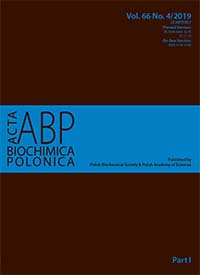Molecular mechanisms of epithelial to mesenchymal transition in tumor metastasis
Abstract
Epithelial to mesenchymal transition (EMT) is a process during which cancer cells lose epithelial features, cytoskeletal architecture is re-organized, cell shape changes and cells activate genes that help to define mesenchymal phenotype, what leads to an increased cell motility and dissemination of tumor to distant metastatic sites. This review describes different signaling networks between microRNAs and proteins that regulate EMT in tumor growth. Activation of EMT is mediated via series of paracrine signaling molecules. WNT, TGF-b, NOTCH and Shh signaling pathways play crucial roles in activation of EMT-related transcription factors, such as SNAIL, SLUG, ZEB1/2 or TWIST. Recent data provide evidence that crosstalk between microRNAs, long non-coding RNAs and EMT-transcription factors is crucial event in EMT regulation. MicroRNAs affect also level of proteins responsible for cellular contact, adhesion and cytoskeletal proteins, what induces changes of epithelial to mesenchymal phenotype. Understanding of those signaling networks may help to identify novel biomarkers or develop new treatment strategies based on microRNA therapeutics in future.
Acta Biochimica Polonica is an OpenAccess quarterly and publishes four issues a year. All contents are distributed under the Creative Commons Attribution-ShareAlike 4.0 International (CC BY 4.0) license. Everybody may use the content following terms: Attribution — You must give appropriate credit, provide a link to the license, and indicate if changes were made. You may do so in any reasonable manner, but not in any way that suggests the licensor endorses you or your use.
Copyright for all published papers © stays with the authors.
Copyright for the journal: © Polish Biochemical Society.


